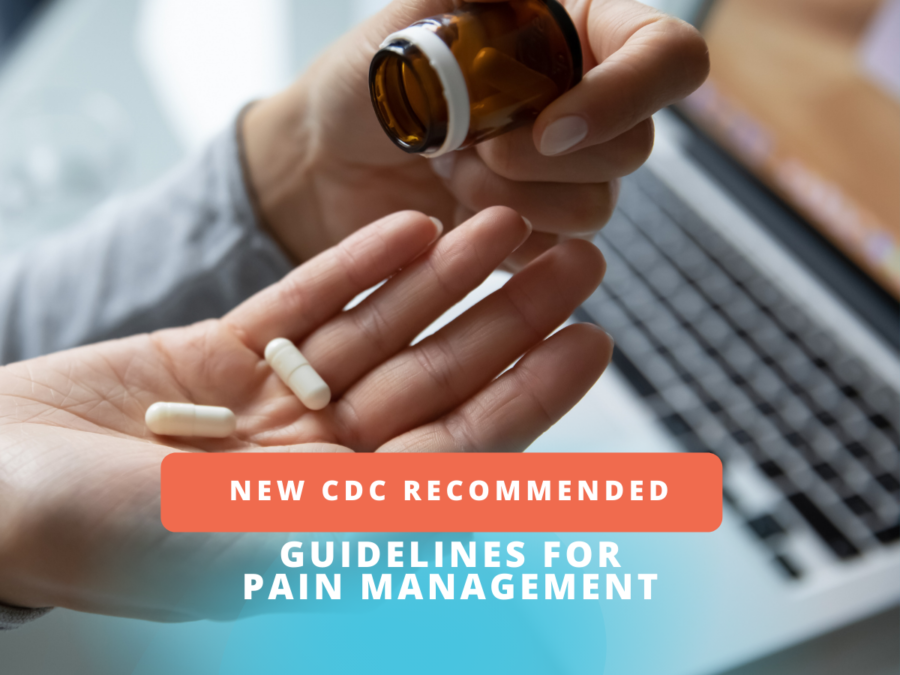According to the CDC, the amount of opioids prescribed and sold in the United States has quadrupled since 1999. In response to this opioid crisis, the CDC has proposed new guidelines regarding pain management and its prescribing practices, including the use of opioids. These new guidelines were released in February 2022. The document is still in draft status and contains 12 recommendations from the CDC. These are the first comprehensive revisions of opioid prescribing guidelines since 2016.
Among the most prominent of the 12 guidelines is the removal of the recommended ceilings on chronic pain dosages. Instead, the CDC is encouraging providers to use a “best judgment” approach to prescribing. The proposal also encourages the use of nonopioid therapies as a first course of treatment for both chronic and acute pain. The proposal includes warnings against opioid use, to include addiction, depressed breathing, altered mental status, etc., but makes sure to also point out that opioids do, in fact, serve a medical purpose in relieving pain.
These guidelines do not apply to patients with cancer or sickle cell disease, or to those under palliative or end-of-life care.
The proposal also makes sure to emphasize that physicians should regularly reassess patients with regards to the risks and benefits of opioid regimens.
Concerning drug testing for chronic pain patients, the CDC has also issued the recommendation that patients who test positive for illicit substances be offered counseling, treatment, and, if necessary, a gradual tapering of their medications rather than summarily dismissing these patients from their practices.
In cases of acute pain, the CDC recommends against the use of opioids (with the exception of acute pain from trauma, e.g. burns, crushed bones). They also strongly encourage the use of alternative therapies including heat, massage, manual manipulation, acupuncture, yoga, tai chi, laser therapy, and cryotherapy.
A brief summary of the 12 guidelines issued include:
- Opioids are not first-line therapy.
- Establish goals for pain and function prior to prescribing.
- Discuss risks and benefits of opioid therapy.
- Use immediate-release opioids when initially starting therapy.
- Use the lowest effective dose.
- Prescribe in short durations for acute pain.
- Evaluate the benefits and harms frequently.
- Use strategies to mitigate risk.
- Review PDMP data regularly.
- Use urine drug testing.
- Avoid concurrent opioid and benzodiazepine prescribing.
- Offer treatment for opioid use disorder.
The CDC issued these new guidelines with 3 main goals in mind:
- Improve communication between providers and patients about the risks and benefits of using prescription opioids for chronic pain.
- Provide safer, more effective care for patients with chronic pain.
- Help reduce opioid use disorder and overdose.
In addition to these goals, they also aim to provide guidance for clinicians to determine if and when to start prescription opioids for chronic pain; determine medication selection, dose, duration, when and how to reassess progress, and discontinue medications if needed; and help assess, in conjunction with the patient, the benefits and risks of prescription opioid use.
The focus of these new guidelines is on improving patient care and safety. They hope to accomplish this through encouraging nonopioid therapy as the preference for chronic pain (with the exception of those patients with active cancer, palliative care, or end-of-life care); using lowest possible effective doses of opioids to help reduce the risk of opioid use disorder and overdose; and by encouraging clinicians to use caution when prescribing opioids and monitoring these patients closely.
The new proposal was available on the Federal Register for 60 days for public comment. The comments are now under review and a final version is expected to be released by the end of 2022. As before, these guidelines are intended to be just that – guidelines and recommendations; they are not mandatory.
*Information presented in this blog is for educational purposes only and does not represent the clinical practices nor availability of testing of Genesis Reference Labs.
References:
https://www-nytimes-com.cdn.ampproject.org/c/s/www.nytimes.com/2022/02/10/health/cdc-opioid-pain-guidelines.amp.html
chrome-extension://efaidnbmnnnibpcajpcglclefindmkaj/https://www.cdc.gov/drugoverdose/pdf/Guidelines_At-A-Glance-508.pdf

